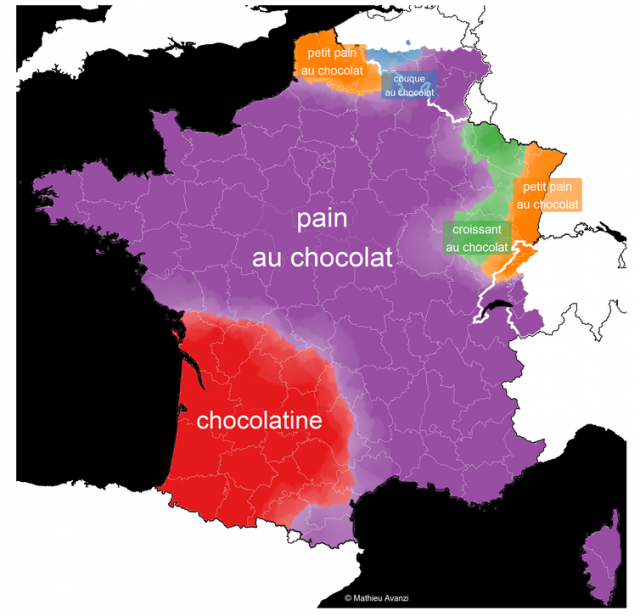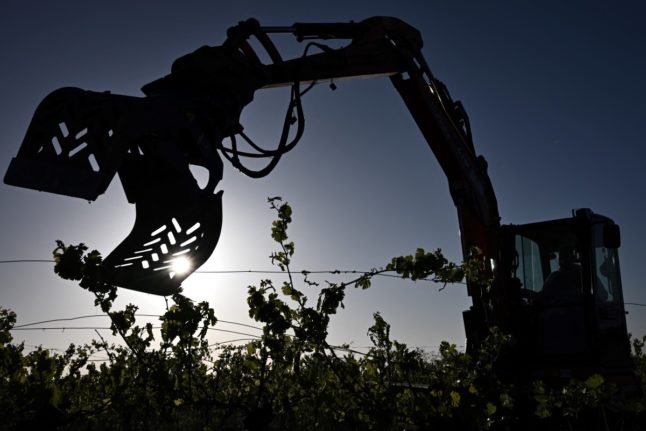The pain au chocolat v chocolatine battle has been raging for centuries and essentially comes down to a geographical divide.
In the south west of the country it’s a chocolatine, in most of the rest of France it’s a pain au chocolat – although there are some exceptions.
In the far north east France, on the border with Belgium, it is often known as a petit pain or petit pain au chocolat, while along the eastern border with Germany it can be either a petit pain au chocolat or a croissant au chocolat.

This map created linguist Mathieu Avanzi shows the geographical distribution of the term.
Exactly how the different names evolved over the centuries has been much disputed – with one theory blaming the English for it – but what is undoubted is that people is the south west are fiercely attached to the term.
In 2017 a group of schoolchildren from Montauban, near Toulouse, wrote to the president asking that he ensure the term was included in the French dictionary, while in 2018 the matter reached parliament.
A group of right wing Republican French MPs tabled an amendment to the new Food Industry and Farming bill aimed at recognising the term chocolatine.
“For example, this would be the case for the chocolate pastry whose name has historically been rooted in the Gascon region, and which is the pride of all of southern France: the chocolatine,” Aurélien Pradié, an MP from the south west Lot department who was backing the amendment said.
In some parts of south western France bakers particularly attached to the traditional name have even threatened to charge customers more who ask for pain au chocolat.
Ça déconne pas à #Bordeaux. pic.twitter.com/PIBbPSJhCw
— Popi (@SultanPopi) July 20, 2017
When we asked The Local’s readers what they called it, the results roughly reflected the geographical split, with 82 percent of people on Facebook saying they would ask for a pain au chocolat when visiting their local boulangerie.
While on Twitter 78 percent used the term pain au chocolat.
Living in France: Daily dilemmas. If you want a delicious French breakfast pastry with chocolate running through it, what do you ask for in your local boulangerie?
— The Local France (@TheLocalFrance) August 12, 2019
What all sides agree on, however, is that they are delicious.



 Please whitelist us to continue reading.
Please whitelist us to continue reading.
Member comments